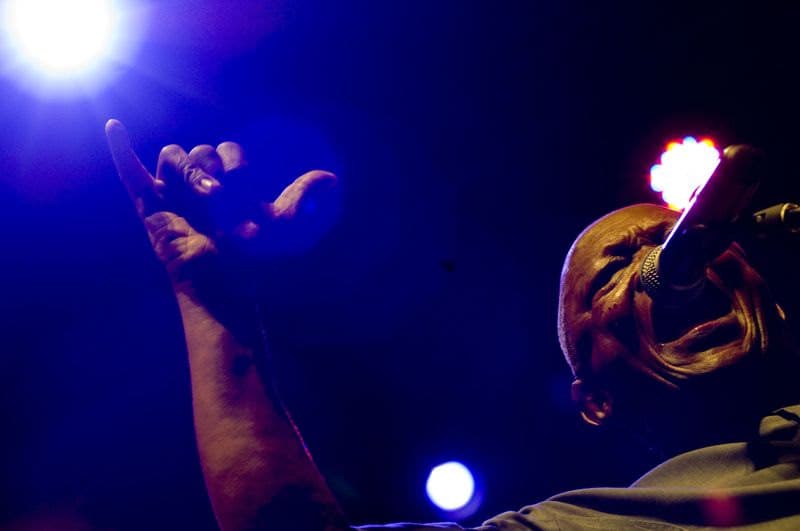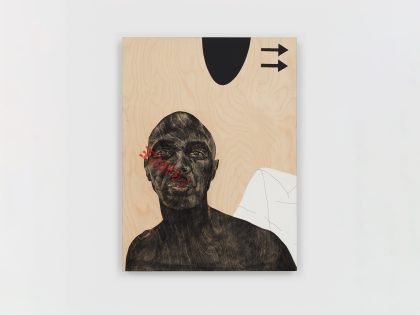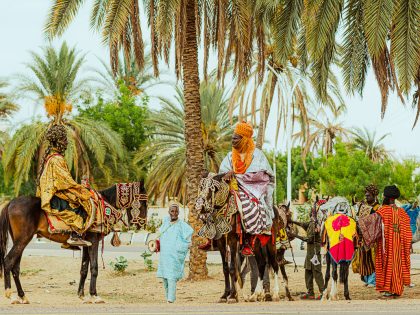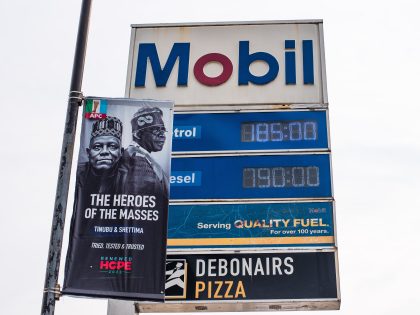Hugh Masekela’s musical modernism
Masekela wanted to craft a sound that avoided “world music” caricature while not simply mimicking the American Bebop he was so enamored of.

Hugh Masekela in 2012. Image credit Mário Pires via Flickr.
Hugh Masekela was one of the last great jazz men of the twentieth century. Both his life and music were shaped by transatlantic political and cultural currents that ebbed their way through the slums of Johannesburg and the jazz dives of Harlem. His death has produced two broad depictions of the man: Masekela the founder of the South African Jazz sound, and Masekela the activist who used music to raise attention to the injustices of apartheid. Neither of these are inaccurate, but they do little to capture the complexity of the man or his music. For many years Masekela struggled to craft a sound that avoided “world music” caricature while not simply mimicking the American Bebop he was so enamored of. He was a reluctant activist, only dedicating himself to the anti-apartheid struggle in the 1980s, years after people like Miriam Makeba had condemned the regime on the global stage.
Masekela lived in exile for thirty years of his life. It was during this time that his life revolved around an exile diaspora composed of fellow artists and activists who had fled the continent, as well as African American jazz musicians who looked to the continent for inspiration. The historian Robin D.G. Kelley has described jazz in these years as the product of transnational encounters. Jazz was, “a path to the future, a vehicle for both Africans and African Americans to articulate and realize their own distinctive modernity while critiquing its western variant.” For African-American Jazz musicians, Africa was a modernizing force in the midst of Cold War rivalries and their songs referenced the achievements of leaders like Nkrumah and Nyerere. For African Jazz musicians, America promised a cosmopolitan global citizenship and, for Masekela, an escape from racist rule. This produced not only new musical directions, but political and cultural identities that connected boycotts and marches from Soweto to Selma.
Masekela entered these transnational currents in 1960 when, barely 20, he left South Africa on a scholarship to London and then New York. The previous year he had participated in the staging of South Africa’s first jazz musical, “King Kong,” the story of a boxer in Sophiatown set against the background of the Treason Trial and the eventual razing of the township. The musical featured some of South Africa’s greatest jazz talents, Miriam Makeba, Kippie Moeketsi, Todd Matshikiza and Letta Mbulu. The musical highlighted the transgressive potential of interracial artistic collaboration, but it also generated swift response from the apartheid government (Nelson Mandela was in attendance at the first performance) and many musicians, including Masekela soon found themselves of interest to the apartheid special branch.
Exile for Masekela was an opportunity to rub shoulders with the jazz greats he had admired since childhood. He suddenly found himself in the company of Thelonius Monk, John Coltrane and Dizzy Gillespie and befriended by musician/activists like Harry Belafonte. It was during this period that he struggled to craft a sound that was his own. His previous work with the Jazz Epistles had drawn on traditional South African rhythms moored in the Bebop of Monk and Dizzy. The result was more of an incorporation of musical elements than a distinctive sound.
His time in exile became a period of self-discovery and reinvention. His first album released in the US, Trumpet Africaine, was not a success, largely due to his attempt at imitating American jazz musicians. It was Harry Belafonte that recommended he “play music from home.”
The music he created, however, was not simply a bebop adaptation of South African Kwela and Mbaqanga (genres of South African music that had their roots in the country’s migrant worker culture), but a hybrid ensemble of the sounds he encountered in New York:
All our songs were a hybrid of traditional and ethnic chants, township dance, and Caribbean, calypso-like grooves mixed with jazz and Brazilian sambas. It was a potpourri of the music of the African diaspora. All kinds of jazz critics and music experts have tried to categorize it, but have been unable to pin it down. I haven’t either. One thing for sure, it has gotten me where I am today.
Masekela was one of the few great jazz instrumentalists who was also an incisive lyricist. He was not only interested in mbaqanga structure and rhythms, but the fact that this musical style was brought to urban areas by rural migrants. Growing up in Witbank’s townships, about 90 miles from Johannesburg, his grandmother ran a shebeen (a public drinking house) which served migrant workers who had come from across Southern Africa to work on the mines. It was here that he encountered stories of migration, displacement, the longing for home, exile and the indignities of colonialism and apartheid. These are reflected in well-known songs like “Stimela” where a train rumbles through the rural villages Southern Africa carrying men to the mines, “deep, deep, deep down in the belly of the earth; Where they are digging and drilling that mighty evasive stone.”
This preoccupation with mobility is hardly surprising given that colonialism and apartheid were spatial engineering projects aimed at controlling not just the movement of labor but the intimacies of everyday life. The young men that he encountered in his grandmother’s shebeen told stories of migration and loneliness, but also of resilience, struggle and the possibilities that urban life might offer.
It was this romance associated with the urban that left a marked impression on a young Masekela. He would have undoubtedly read Drum magazine, launched in 1951 and aimed at an urban African audience, which reviewed the latest American Jazz albums next to images of the Chicago and New York skylines. His decision to become a trumpet player was, in fact, cemented when he snuck into the Harlem Cinema in Sophiatown to watch Young Man with a Horn with Kirk Douglas: “My resolve there and then was to become a trumpet player… I wanted this with all my heart and being — nothing else would do.”

American Jazz was emblematic of not only urban modernity but a spirit of freedom that was hard to locate in the segregated confines of apartheid-era Johannesburg. While Jim Crow racism was alive and well in America, the sound emanating from New York City and Chicago seemed to capture the possibilities of a freedom that Black South Africans were struggling for. As Kelley has noted, African and African American musicians were drawn to jazz as an idiomatic expression of Black modernity that linked ancient pasts, present struggles and the possibility of future freedom.
Masekela’s New York period was formative but tumultuous. His marriage to Miriam Makeba soon fell apart and this was followed by a three-month marriage to jazz singer Chris Calloway. In his memoirs, Masekela describes a period of “forty years of sex, drugs and alcohol addiction” that began in the clubs of New York. The 1960s ended with commercial success in the form of Grazing in the Grass but also the release of his most political album, Masekela, which features homages to Pan-Africanist leader Robert Sobukwe and “Gold” the story of a Venda mineworker. The album captures both Masekela’s abiding interest in themes of migration and colonial violence but also the loneliness of exile:
And if I’ll be strong enough to finish my story
You will see just what a movie this has been
There are brothers and sisters who think how you look is all it is
There are cities where people never say hello
It was his attempt to once again reinvent himself and his sound that saw him return to the continent in the early 1970s at the invitation of Fela Kuti. In 1972 he arrived in Conakry, Guinea and went on to travel through Nigeria and Ghana. His former wife was living as a guest of Sekou Toure in Guinea with her husband, the black power activist Stokely Carmichael. Jamming with Fela and finally working with the Ghanaian group Hedzoleh Soundz, he produced the album Hugh Masekela Introducing Hedzoleh Soundz and later I Am Not Afraid and The Boy’s Doin’ It, albums which melded Afro-American Jazz sensibilities with West African Afrobeat and Highlife.
Holding a Ghanian passport, he returned to Southern Africa in 1980 for a concert in Lesotho. The concert allowed him to connect with musicians who had remained in South Africa as well as to visit family members, including his ninety-year-old grandmother. His exile had taken a toll on his family. He had been prevented from attending his mother’s funeral and his sister Barbara was in exile, working with Oliver Tambo on international anti-apartheid efforts. According the South African literary scholar Sam Raditlhalo it was these factors that caused him to ultimately settle in Botswana. A birthday card from Mandela, smuggled from prison, caused him to take activism seriously for the first time.
In Gaborone he was surrounded by other exile artists, notably the writer Wally Mongane Serote and his former colleague from the Jazz Epistles Jonas Gwangwa, who, at the time, was leader of the ANC’s cultural ensemble Amandla. Gaborone was also home to the Medu Art Ensemble, a collective of cultural workers in exile who produced anti-apartheid posters and pamphlets that were smuggled into the country. His time in Botswana coincided with a global campaign calling for the release of Nelson Mandela, which led to the song “Bring Him Back Home,” which became a standard at mass rallies in Europe and the US calling for Mandela and other South African political prisoners’ release. The situation in Gabarone soon became untenable after raids by South African troops left a number of exiles, including some associated with Medu, dead.
Masekela was allowed back into South Africa in 1990 but soon left on the Graceland and Sarafina tours and afterwards returned to the US for a time, partly in an attempt to recover from the alcohol and drug addiction that had followed him his whole life. Exile was hard but returning home, it seemed, was no easy transition. As the Palestinian intellectual Edward Said has written of exile, “both the old and the new environments are vivid, actual, occurring contrapuntally.” How to rebuild a culture and identity in a society that had cast you out and then, on return, asked you to forgive it?
While Masekela is frequently cited as a pioneer of South African Jazz, it is perhaps better to understand his work as part of a global sound shaped by transatlantic encounters. As Kelley has argued, we should perhaps no longer speak of jazz as an American art form but part of a diasporic conversation or what the academic Paul Gilroy has termed the Black Atlantic. Masekela, South African Jazz and, arguably, political parties like the ANC, are products of these transatlantic geographies.
The sound Masekela created does not belong to South Africa alone, to suggest it does is to fall prey to a narrow cultural nationalism that ignores the Black Atlantic as a modern and diasporic cultural space, that was neither specifically African, American, European or Caribbean. Parsing Masekela’s music does not reveal any attempt at creating an authentic South African sound but rather of overcoming national particularity in the pursuit of a modernity that was both liberating and joyful. Frantz Fanon captured this well when, describing the reinvention of jazz by African American artists after World War 2, he noted, “As soon as the Negro comes to an understanding of himself, and understands the rest of the world differently, when he gives birth to hope and forces back the racist universe, it is clear that his trumpet sounds more clearly and his voice less hoarsely.”



















